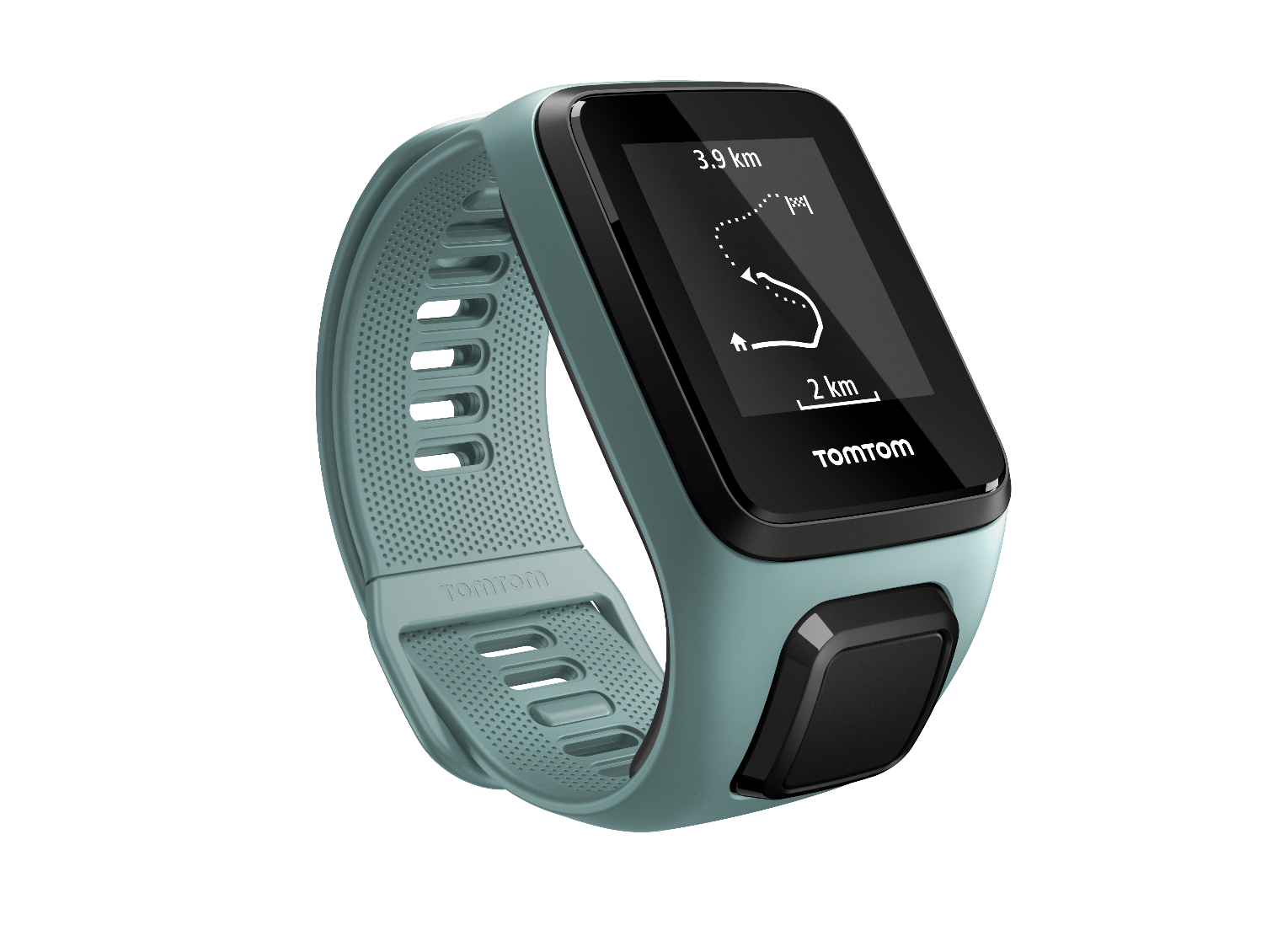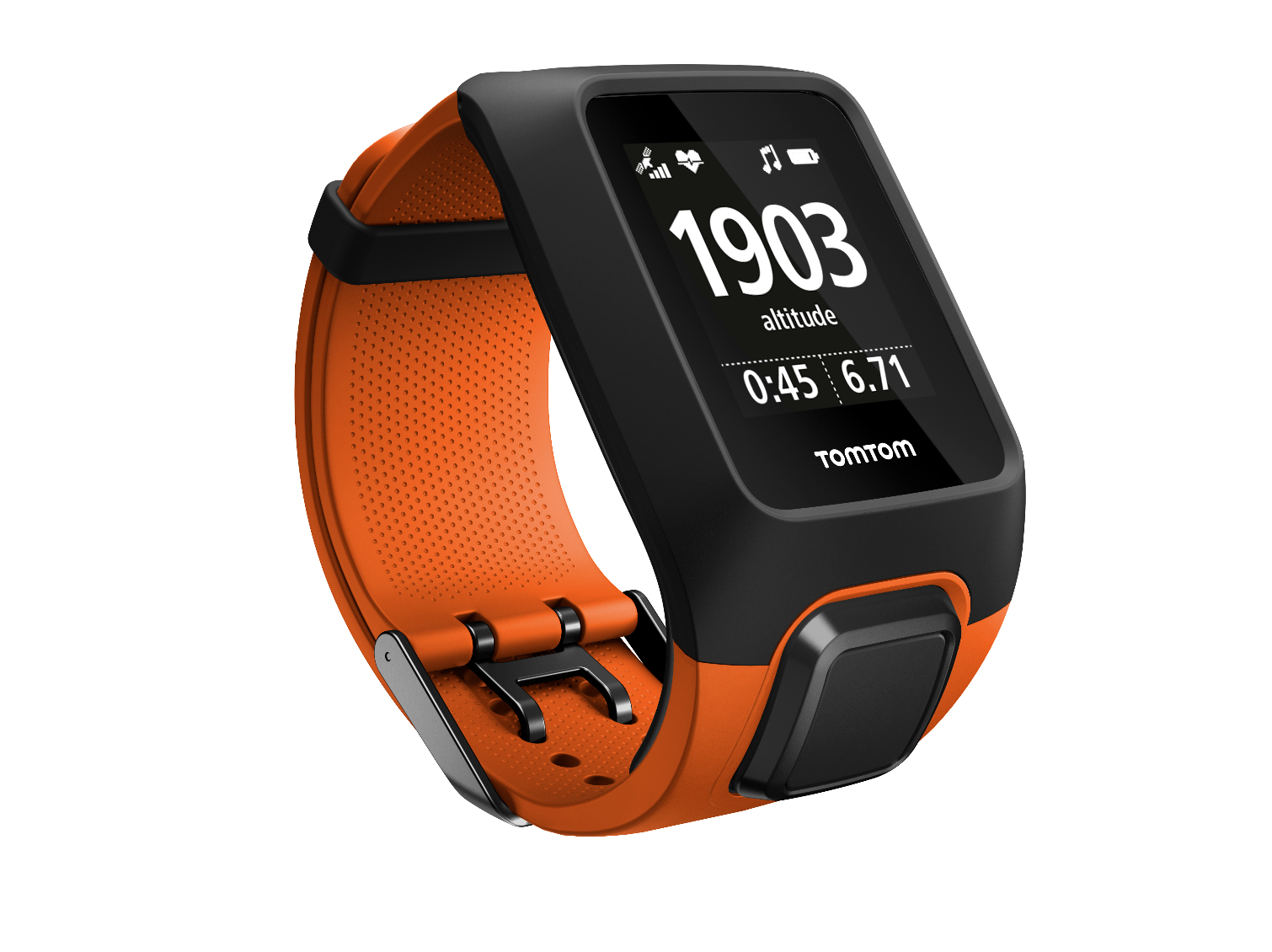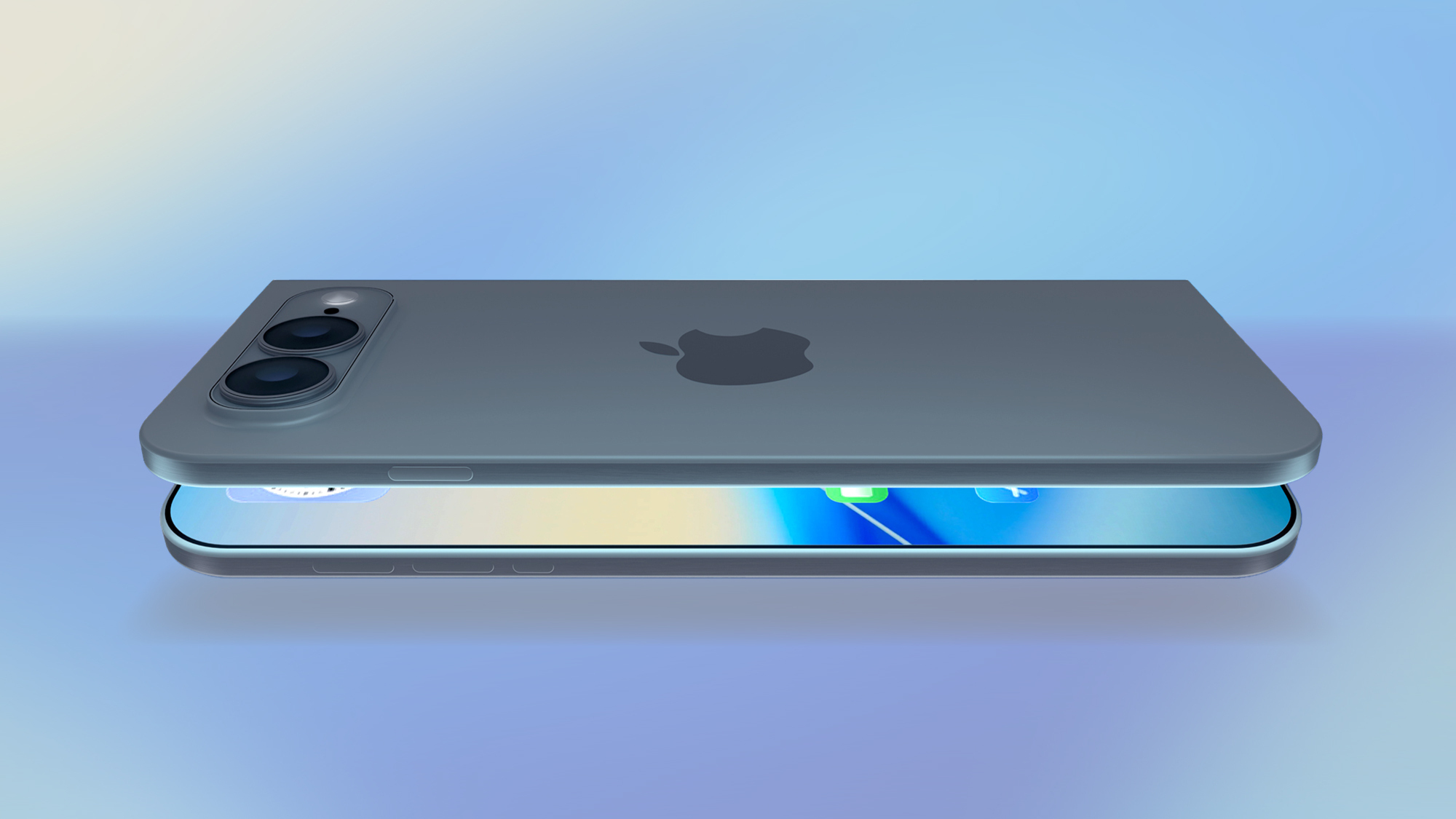TomTom's New Fitness Tracker Can Measure Your Body Fat
TomTom's three new affordable wearables start at just $129, and will be out this fall.
TomTom is looking to broaden its appeal with three new devices aimed at not just dedicated athletes, but also more casual consumers looking to maintain a healthier lifestyle. The devices, which include such features as body composition analysis, heart rate monitors, and built-in music players, start at $129.99, and will be available in October.
Going after Fitbit and Garmin, TomTom's least expensive device, the TomTom Touch, will cost $129, and, in many respects, looks similar to the Charge 2 and the Vivosmart HR, both in form and function. It has a black and white touchscreen that displays your steps, distance and other fitness metrics, as well as smartphone notifications. Like its competition, it also has an optical heart rate monitor that can track your heart rate throughout the day.

However, the TomTom Touch has body composition analysis, so it can measure your percentage of body fat and muscle mass, much like some of the best smart scales can. It does this by measuring the electrical resistance in your body, by sending a signal from the underside of the tracker, through your arm, and to a second metal contact on the top of the tracker, which you need to touch with your finger.
The TomTom Touch will have a battery life of up to five days, and is splash-resistant, similar to the vivosmart HR. At $129, it's $20 less expensive than the Charge 2, and the addition of body composition may be intriguing to some looking for more than just a heart rate measurement.
MORE: Best Fitness Trackers for Running, Swimming and Training

For more frequent runners, TomTom is updating its Spark series of GPS watches with three new models, all of which will have a feature that will leave a digital trail of breadcrumbs, so you can go for a run in an unfamiliar place, and still find your way back home. Additionally, Route Exploration will let you upload routes to the watch, so you can try out a new path someplace you've never run before.
The Spark 3 will start at $129. Runners who like to jam to tunes might prefer the $149 Spark 3 Music, which has 3GB of storage for your music. This is a pretty rare feature for GPS devices—only a few, such as the Samsung Gear Fit 2, have this capability—and it's one that sets TomTom's watch apart. Plus, TomTom is also bundling a pair of Bluetooth earbuds that will last up to 6 hours on a charge.
Get instant access to breaking news, the hottest reviews, great deals and helpful tips.
The Spark 3 Music has 3GB of storage, which is enough space for about 500 songs. Unlike the previous Spark + Music GPS watch, which had a horrible app for uploading songs to the watch, the new Spark 3 will let you use either iTunes or Windows Media Player. Plus, the watch will send you audible cues about your performance as you run.
For $179, the Spark 3 Cardio Music also includes an optical heart rate monitor (you get the headphones, too). When using the music player, GPS, and the heart rate monitor, the watch will last about 5 hours, which is less than other GPS watches in this price range, but understandable given the additional power requirements.
All three versions of the Spark 3 are water-resistant to 130 feet, and will be available in October.
MORE: The Best GPS Watches for Sports and Athletics

Geared towards more rugged types is the TomTom Adventurer, which looks much like the Spark 3, but has additional modes that will track skiing, snowboarding, trail runs, and other outdoor activities. Similar to the Garmin fenix 3, the Adventurer has an automatic activity tracking, so it will know when you're going down a trail, as opposed to sitting on a chairlift.
The Adventurer also has a built-in optical heart rate monitor, Route Exploration, an integrated music player with 3GB of storage, and up to 24 hours of battery life (when using the Hiking mode). It will cost $349 when it's available in October.
Taken all together, TomTom looks like it chose its spots well when deciding to expand its wearable offerings. We're very interested to see how well they perform against the competition.

Michael A. Prospero is the U.S. Editor-in-Chief for Tom’s Guide. He oversees all evergreen content and oversees the Homes, Smart Home, and Fitness/Wearables categories for the site. In his spare time, he also tests out the latest drones, electric scooters, and smart home gadgets, such as video doorbells. Before his tenure at Tom's Guide, he was the Reviews Editor for Laptop Magazine, a reporter at Fast Company, the Times of Trenton, and, many eons back, an intern at George magazine. He received his undergraduate degree from Boston College, where he worked on the campus newspaper The Heights, and then attended the Columbia University school of Journalism. When he’s not testing out the latest running watch, electric scooter, or skiing or training for a marathon, he’s probably using the latest sous vide machine, smoker, or pizza oven, to the delight — or chagrin — of his family.
